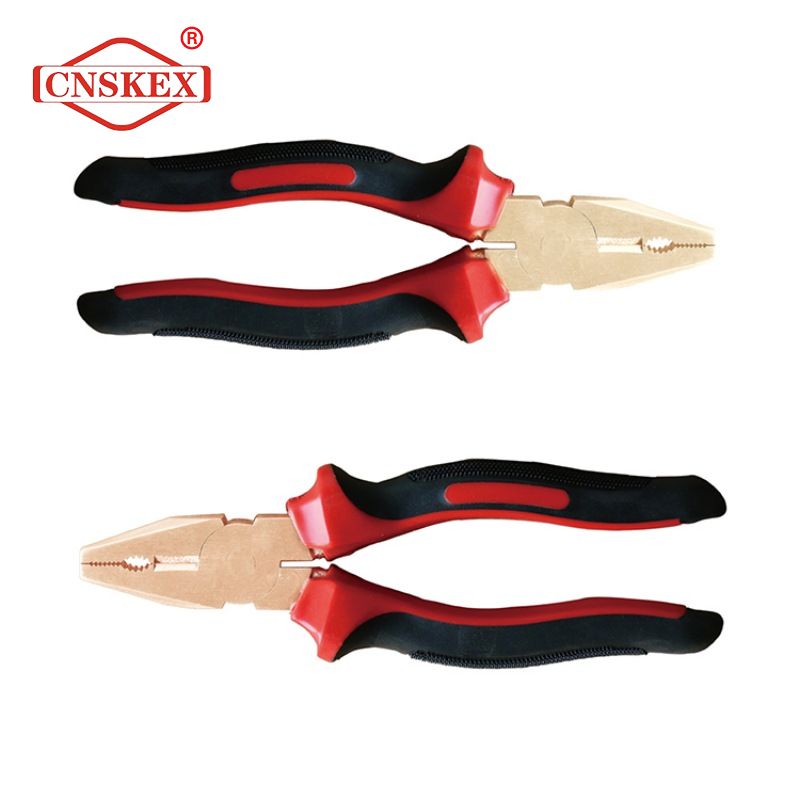Sep. 28, 2023
Tools
In various industries such as oil and gas, chemical, manufacturing, and construction, the risk of fire or explosions due to the presence of flammable gases, vapors, or dust is a constant concern. To mitigate this risk, non-sparking tools are employed to minimize the possibility of generating sparks during work, which could ignite hazardous materials. In this article, we'll explore the importance of non-sparking tools and provide essential tips for their safe usage.
Understanding Non-Sparking Tools:
Non-sparking tools, also known as spark-resistant tools or safety tools, are specially designed to prevent the creation of sparks when struck or used in situations where flammable materials are present. These tools are typically made from materials like aluminum-bronze or beryllium-copper alloys, which have low spark-producing potential.
Tips for Using Non-Sparking Tools Safely:
Training and Education: Before using non-sparking tools, it's crucial to receive proper training and education on their usage. Ensure that all personnel who will be handling these tools are aware of the potential hazards and are trained in safe work practices.
Tool Inspection: Regularly inspect non-sparking tools before each use. Look for signs of wear, damage, or corrosion that may affect their performance. Damaged tools should be removed from service and replaced promptly.
Proper Tool Selection: Choose the appropriate non-sparking hand tool for the specific task at hand. Different jobs may require different tools, so make sure the tool you select is suitable for the materials and conditions you'll be working with.

Maintain Clean Work Areas: Keep your work area clean and free from flammable materials, debris, and dust. Minimizing the presence of potential ignition sources is essential for safety when using non-sparking tools.
Avoid Overloading Tools: Do not overload or apply excessive force to non-sparking tools. Using excessive force can lead to tool failure, potentially generating sparks. Instead, use the right tool for the job and apply consistent pressure.
Wear Appropriate PPE: Personal Protective Equipment (PPE) is crucial when working with non-sparking tools. This includes safety glasses, gloves, and any additional protective gear recommended for the specific task.
Maintain Safe Distances: Maintain a safe distance from flammable materials when using non-sparking tools. Keep in mind that sparks can travel a certain distance, so ensure that you are a safe distance away from potential hazards.
Tool Storage and Maintenance: Properly store non-sparking tools when they are not in use. Store them in a clean, dry environment to prevent corrosion. Regularly maintain and lubricate moving parts to ensure optimal performance.
Avoid Striking Hard Surfaces: Non-sparking safety tools are designed for use on softer materials. Avoid striking hard surfaces, as this can damage the tool and increase the risk of spark generation. Use a striking surface that is softer than the tool itself.
Emergency Response Preparedness: Be prepared for emergencies. Have fire extinguishers, fire blankets, and other firefighting equipment readily available in case a spark or ignition occurs. Ensure that all personnel are trained in emergency response procedures.
Safe Disposal of Flammable Waste: If you are working in an environment with flammable waste, ensure that it is disposed of safely and in accordance with relevant regulations. Do not leave flammable waste near the work area.
Report and Investigate Incidents: If any incidents or near-miss events occur, report them immediately and conduct a thorough investigation to understand the root causes and prevent future occurrences.
Conclusion:
Non-sparking tools are indispensable in industries where the risk of fire or explosion is a constant concern. By following these safety tips, workers can minimize the risk of sparks and help ensure a safe working environment. Proper training, regular tool inspection, and adherence to safety protocols are essential for the safe and effective use of Sikai non-sparking tools. Prioritizing safety when working with these tools is not just a best practice; it's a crucial step in preventing accidents and protecting lives and property.
Previous: Pattern Rollers: Transforming Surfaces with Artistic Imprints
Next: The Non-Sparking Hammer: Ensuring Safety in Hazardous Environments
If you are interested in sending in a Guest Blogger Submission,welcome to write for us!
All Comments ( 0 )